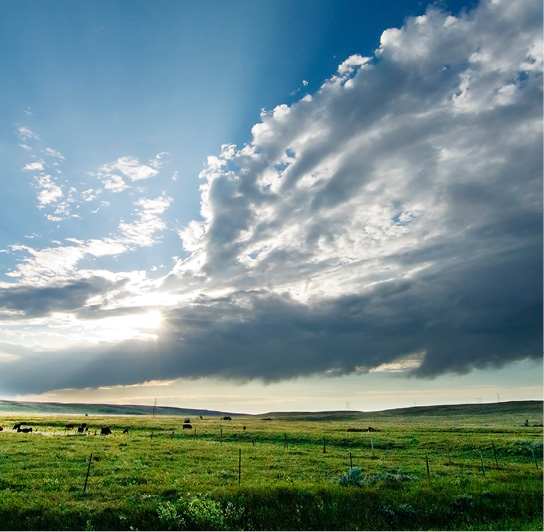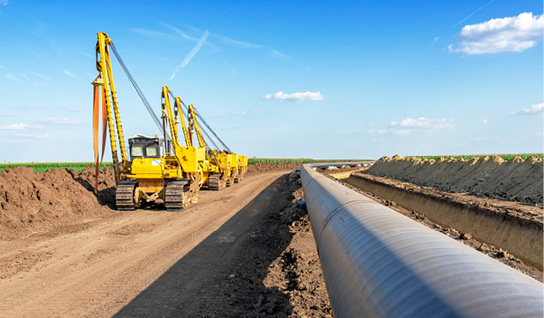2021–22 Annual Report of the Canada Energy Regulator – Core Responsibilities: What we achieved

Safety and Environment Oversight
The CER works for Canadians to keep energy moving safely and efficiently through the country’s pipelines and powerlines. The organization carries out this function by setting and enforcing regulatory expectations for companies over the full lifecycle – construction, operation, and abandonment – of federally regulated energy infrastructure.
 The CER enforces some of the strictest safety and environmental standards in the world, and its oversight goes beyond simply compliance. The organization promotes best practices to reduce the potential for harm, adopting new technologies and innovative approaches to improve the effectiveness and efficiency of a company’s management system to prevent harm. Regulated companies are required to have emergency management programs, including a robust continuing education program for the police, fire departments, medical facilities, other agencies, and people who live or work near the pipeline. These companies are also expected to engage with all people living and working near pipelines, including Indigenous peoples, the public, contractors, landowners, and municipalities, to promote safe work practices and actions they can take to prevent damage to pipelines.
The CER enforces some of the strictest safety and environmental standards in the world, and its oversight goes beyond simply compliance. The organization promotes best practices to reduce the potential for harm, adopting new technologies and innovative approaches to improve the effectiveness and efficiency of a company’s management system to prevent harm. Regulated companies are required to have emergency management programs, including a robust continuing education program for the police, fire departments, medical facilities, other agencies, and people who live or work near the pipeline. These companies are also expected to engage with all people living and working near pipelines, including Indigenous peoples, the public, contractors, landowners, and municipalities, to promote safe work practices and actions they can take to prevent damage to pipelines.
The CER’s Commitment
- Harm to people and the environment, through the lifecycle of energy-related infrastructure, is prevented.
The CER’s commitment to keeping people safe is at the core of who it is and the work it does. Regulated companies are required to anticipate, manage, and mitigate any potential harm to safety and the environment that may occur through the full lifecycle of their energy facilities.
Performance Results Summary – Safety and Environment Oversight
Performance Measure |
Target |
Results |
Results |
Results |
|---|---|---|---|---|
Number of serious injuries and fatalities related to regulated infrastructure. |
0 |
12 |
||
Number of incidents related to regulated infrastructure that harm the environment. |
0 |
2 |
||
Percentage of unauthorized activities on regulated infrastructure that involve repeat violators. |
<15% |
12% |
11%Footnote 5 |
10% |
Compliance Verification Activities
Preventing harm is the foundation of how the CER keeps people safe and protects the environment.
The CER aims to achieve zero incidents, meaning there is no harm to people or the environment on the energy infrastructure it regulates. The CER follows a risk-based approach in planning and conducting compliance verification activities (CVA) and when the activities of regulated companies have the potential to pose greater harm to people or the environment, the CER focuses increased oversight through engagement, inspections, investigations, audits, and enforcement, when necessary.
In addition to CVAs, the CER provides oversight in other ways such as:
- Analyzing the root causes of incidents to ensure appropriate corrective or preventive actions are identified.
- Examining documents related to conditions of authorizations to verify that companies are taking the necessary steps to comply with these conditions.
- Responding to emergencies when they happen to verify that companies are protecting the safety of people and minimizing environmental damage.
- Reviewing Operations & Maintenance notifications as part of ongoing oversight of operating facilities.
- Reviewing Notices of Contamination to oversee companies’ management of contamination and remediation activities.
In 2021–22, the CER conducted 239 CVAs, which included:
107
Inspections
18
Emergency Response
Exercises
6
Management
System
Audit Reports
16
Compliance
Screening
Meetings
30
Implementation
Assessment
Meetings
60
Information Exchange
Meetings
2
Manual Reviews
Indigenous Monitoring
The CER is committed to advancing Reconciliation with Indigenous peoples and finding new ways to include Indigenous peoples in the oversight of federally regulated infrastructure. The organization continues to increase the involvement of Indigenous Monitors in its compliance activities, which builds trust and confidence with Indigenous peoples, while simultaneously strengthening its environment and safety oversight. To further enhance its oversight, the CER established an Indigenous Monitor Bridging Program, which provided opportunities for Indigenous Monitors to join the CER as Regulatory Compliance Officers and train to become designated Inspection Officers.
In 2021–22:
- Compliance with conditions attached to facility authorizations was 99 per cent
- 2309 active conditions
- 1858 post-approval documents were filed with the CER and Commission
- 484 Operations & Maintenance notifications were reviewed as part of ongoing oversight of operating facilities
100th CVA Completed with IAMC Monitors for the Trans Mountain Expansion Project (TMEP)
The CER completed its 100th CVA with IAMC Monitors for TMEP. This is an exceptional milestone for IAMC-TMX and the CER. The CER’s compliance verification activities were informed by the IAMC-TMX and through collaboration with Indigenous Monitors. A key area of focus this year of the Indigenous Monitoring Program was on Sites of Indigenous Significance (SIS) along pipeline routes. The CER worked closely with the IAMC-TMX and Indigenous Monitors to address considerations related to the confidentiality of SIS locations and potential project impacts on these sites. Multiple workshops were held to redefine how SIS should be protected and how companies should engage with affected communities. As a result, the TMEP has improved processes and transparency with respect to chance finds.
CER’s NOVA Gas Transmission Ltd. Indigenous Monitoring Program
 The first phase of the CER’s Indigenous Monitoring Program continued to move forward, establishing contracts to enable the participation of Indigenous Monitors in safety and environmental compliance and oversight activities for the NGTL System.
The first phase of the CER’s Indigenous Monitoring Program continued to move forward, establishing contracts to enable the participation of Indigenous Monitors in safety and environmental compliance and oversight activities for the NGTL System.
The CER launched the second phase of its Indigenous Monitoring Program in the second half of 2021, initiating a Request for Interest (RFI) in October 2021 and a Request for Standing Offers (RFSO) process in January 2022. The RFI was distributed to 86 Indigenous communities to engage communities, gauge interest in participating in the program, and provide information on the CER’s procurement process. The RFSO process was launched in January 2022 to secure Indigenous Monitor services, enabling Indigenous Monitors to join CER Inspection Officers on an expanded list of NGTL projects, including the Edson Mainline Expansion Project and North Corridor Expansion Project.
Developing Community Profiles tool
Stemming from a request, from the IAMC-TMX, CER staff collaborated with Indigenous Partnerships Office of Natural Resources Canada (NRCan) as co-federal lead and Indigenous communities to develop the Community Profiles tool for CER Inspection Officers and IAMC Indigenous Monitors to access community information relevant to inspection areas remotely. This helps to connect Indigenous Monitors with local resources that can identify specific Indigenous community issues or interests that could be relevant to their work.
Remediation Oversight
The CER’s remediation oversight is in year two of its three-year plan. Significant progress has been made to date, including completing reviews of 379 of 490 Notices of Contamination, 66 of 66 Remedial Action Plans, three of six Risk Management Plans, and nine of 31 Closure reports. The CER completed an internal report on provincial requirements for contaminated sites management. This report will inform the CER’s conversations with other regulators regarding contaminated sites oversight and potential shared oversight agreements.
Safety Culture
The CER has made a commitment to building an understanding of what safety culture is and how companies can improve theirs. This past year the CER published an external facing Safety Culture Learning Portal that covers guidance on assessments, learning moments, an updated CER Safety Culture Statement, annual survey results, and the results of two CER hosted industry workshops. The CER also sponsored a Canadian Standards Association Express document on Human & Organizational Factors. The document was released for public comment, which ended December, and is currently in its final publishing stage.
Financial Oversight
 Financial oversight activities included one completed audit and review of Abandonment and Financial Resources annual filings and audited financial statements. In 2021–22, one financial regulatory audit was completed, and one financial regulatory audit commenced, which is presently underway. The absolute liability limits (A.L.L.) audit was completed and examined the calculations for nine pipeline companies regarding their Financial Resource Requirements to confirm they have been calculated correctly in accordance with the Pipeline Financial Requirements Guidelines. The audit resulted in one finding for Trans-Northern Pipelines Inc., which is currently part of another process before the CER. A second focused financial regulatory audit was started at the end of December and involved companies’ practices and procedures related to abandonment and collection mechanisms such as trusts. This audit is ongoing as of the end of March. Appendix E provides more information related to financial regulatory audits.
Financial oversight activities included one completed audit and review of Abandonment and Financial Resources annual filings and audited financial statements. In 2021–22, one financial regulatory audit was completed, and one financial regulatory audit commenced, which is presently underway. The absolute liability limits (A.L.L.) audit was completed and examined the calculations for nine pipeline companies regarding their Financial Resource Requirements to confirm they have been calculated correctly in accordance with the Pipeline Financial Requirements Guidelines. The audit resulted in one finding for Trans-Northern Pipelines Inc., which is currently part of another process before the CER. A second focused financial regulatory audit was started at the end of December and involved companies’ practices and procedures related to abandonment and collection mechanisms such as trusts. This audit is ongoing as of the end of March. Appendix E provides more information related to financial regulatory audits.
Response to Minell Pipeline Limited Rupture in McAuley, Manitoba
On 5 October 2021, a property owner was performing agricultural activities and contacted a natural gas pipeline causing a rupture. The pipeline was shut down, valves closed, the line isolated, and gas vented.
The company activated its Emergency Operations Centre and established an Incident Command Post, that documented the cause of the damage, assessed the damage, and developed a repair plan. The CER activated its Virtual Emergency Operations Centre and deployed staff to the site. The company was able to complete repairs and safely return the line to service.
The Transportation Safety Board (TSB) investigated the rupture to determine the cause and contributing factors related to this occurrence. In response to the incident, the CER, working collaboratively with the TSB, issued Safety Advisory SA 2022-01 Depth of Cover in Agricultural Areas in April 2022 to prevent further incidents related to agricultural work and federally-regulated infrastructure.
 Safety Advisories are periodically issued to inform the pipeline, oil, and gas industries of an identified safety or environmental concern to prevent similar
incidents. A Safety Advisory highlights CER regulatory requirements and conveys the CER’s expectation that regulated companies take appropriate action to mitigate any potential impacts to people or the environment.
Safety Advisories are periodically issued to inform the pipeline, oil, and gas industries of an identified safety or environmental concern to prevent similar
incidents. A Safety Advisory highlights CER regulatory requirements and conveys the CER’s expectation that regulated companies take appropriate action to mitigate any potential impacts to people or the environment.
OPR Review
The CER is undertaking the first-ever comprehensive review of its principal regulation for the oversight of pipelines, the OPR. The review includes updates to align the OPR with the CER Act and represents how the CER will deliver on commitments to enhance Canada’s global competitiveness. It also represents how the CER will transform the way it and its regulated companies will work with Indigenous peoples across the lifecycle of regulated facilities. Reconciliation is a prominent theme within the review, building on important work completed previously with the CER’s Indigenous partners, including the IAMCs.
In December 2021, the CER launched the first phase of engagement for the OPR Review and worked with Indigenous peoples, regulated companies, and interested stakeholders across Canada to gather feedback on approaches for engagement and to test key themes for improvement.
The CER developed a Discussion Paper to identify possible areas of change and to focus on early engagement activity. This Paper outlines questions for input, which will assist with future policy and regulation development. Topics addressed in it include lessons learned, Reconciliation with Indigenous peoples, engagement and inclusive participation, global competitiveness, safety and environmental protection, and implementation.
With the help of the Impact Assessment Agency of Canada, funding was made available to support the participation of Indigenous peoples in the first phase of the OPR Review for the Discussion Paper. There was an unprecedented level of interest from Indigenous peoples, with over 90 applications for funding from Indigenous peoples and communities across Canada.
Input received from this phase will be summarized in a “What We Heard” report. This report is expected to be released sometime Winter 2022–23 and will be available on the CER’s OPR Review webpage. This input will also inform the next phase of the review.
Construction Oversight of the Trans Mountain Expansion Project (TMEP) and Nova Gas Transmission Ltd. (NGTL) Projects
TMEP
In 2021–22, construction activities on the TMEP continued across all spreads and work areas, including at terminals, pump stations, and the Burnaby Tunnel. The company’s activities, and the CER’s oversight of the TMEP, were carried out against the backdrop of the ongoing COVID-19 pandemic, an unprecedented wildfire season in the summer, and the extreme weather event causing flooding in BC. The CER’s oversight was conducted with due consideration to the public health orders in both Alberta and BC and the company’s construction schedule. The CER’s Inspection Officers were considered essential employees, therefore not impacted by travel restrictions within and across BC, which meant they could continue conducting inspections.
The CER undertook 50 CVAs on TMEP, specifically this fiscal, including inspections, emergency response exercises, and compliance meetings. Review of project condition compliance filings continued throughout the year.
Over the year, a series of incidents occurred on the TMEP, including several serious injuries and adverse environmental effects. In addition to the BC flood event, heavy rainfall flooded the worksite and equipment at a Coquihalla River watercourse crossing. In all cases, the CER actively followed up on the company’s investigations of these incidents and acted where necessary. In August, the CER issued an Inspection Officer Order (subsequently amended) to Trans Mountain. The measures in the Inspection Officer Order were satisfied on 16 August and 2 September, allowing work to resume.
The CER will continue to hold the company accountable for fulfilling the conditions of the Project and for meeting its regulatory obligations and commitments.
To learn more about regulatory approvals for TMEP, see the 2021–22 Annual Report of the Commission of the Canada Energy Regulator.
NGTL
Construction activity on NGTL’s 2021 System Expansion Project (NGTL 2021) continued throughout 2021–22. The company’s activities and the CER’s oversight were carried out during successive waves of the pandemic and in consideration of local and Alberta public health measures.
The CER conducted 19 CVAs on NGTL 2021 specifically, including inspections, emergency response exercises, and compliance meetings. Indigenous Monitors participated in 14 of those CVAs on the project.
Engagement on NGTL
The CER began meeting with Indigenous peoples and communities affected by newly approved NGTL projects to support timely information sharing and issue resolution. By developing these relationships proactively, the CER hopes to build their trust and confidence through early identification and resolution of issues and by familiarizing the communities with the roles and responsibilities of the CER during pipeline construction and operations.
The CER also organized several technical sessions with stakeholders and Indigenous peoples affected by newly approved NGTL projects, including NGTL 2021, Edson Mainline Expansion Project, and North Corridor Expansion Project. The goal of these sessions was to encourage two-way dialogue with these groups and increase their awareness of the roles and responsibilities of the CER during pipeline construction and operations.
Energy Adjudication
The CER’s mandate includes making decisions or providing recommendations to the Governor in Council (GIC) on applications and environmental assessments through predictable and timely processes. These applications relate to pipelines and facilities, international power lines, tolls and tariffs, energy exports and imports, oil and gas exploration and drilling in certain northern and offshore areas of Canada, and future offshore renewable energy projects. Decisions and recommendations use fair and inclusive processes, supported by the CER’s provision of participant funding, land matters complaint resolution services, and supporting Crown consultation. When a project has reached the end of its useful life, the CER reviews abandonment applications to ensure that energy projects are abandoned in a safe and environmentally responsible manner.
The Commission has several responsibilities, including making decisions on tolls and tariff applications and applications for pipelines under 40 km. Applications for pipelines greater than 40 km would require GIC approval based on a Commission recommendation. Any project that proposes more than 75 km of new right-of-way would require an integrated review process led by the Impact Assessment Agency of Canada. For more information on Commission decisions and recommendations, please see the CER website.
The CER ensures that its decisions are informed by the best possible evidence and diverse input from people across Canada.
 While the Commission carries out its responsibilities independently, it is part of the CER and contributes to the overall delivery of the CER mandate. The Commission may impose or recommend certain conditions be attached to project approvals. Conditions range from those for environmental protection, engagement with Indigenous peoples, emergency management, or matters related to safety and engineering. The CER Act outlines the way energy projects are assessed by the Commission. The legislation focuses on early engagement and meaningful participation, particularly with Indigenous peoples, in project assessments and includes the mandatory consideration of Indigenous knowledge and a project’s potential impacts on the rights of Indigenous peoples.
While the Commission carries out its responsibilities independently, it is part of the CER and contributes to the overall delivery of the CER mandate. The Commission may impose or recommend certain conditions be attached to project approvals. Conditions range from those for environmental protection, engagement with Indigenous peoples, emergency management, or matters related to safety and engineering. The CER Act outlines the way energy projects are assessed by the Commission. The legislation focuses on early engagement and meaningful participation, particularly with Indigenous peoples, in project assessments and includes the mandatory consideration of Indigenous knowledge and a project’s potential impacts on the rights of Indigenous peoples.
For further details on adjudicative decisions and recommendations to the GIC from the CER, please see the 2021–22 Annual Report of the Commission of the Canada Energy Regulator.
Performance Results Summary – Energy Adjudication
Performance Measure |
Target |
Results |
Results |
Results |
|---|---|---|---|---|
Percentage of adjudication decisions overturned on judicial appeal related to procedural fairness. |
0% |
0% |
0% |
0% |
Percentage of adjudication decisions and recommendations that are made within legislated time limits and service standards. |
100% |
100% |
97% |
100% |
Percentage of surveyed participants who indicate that adjudication processes are transparent. |
75% |
79% |
80% |
89% |
Percentage of surveyed participant funding recipients who agree that participant funding enabled their participation in an adjudication process. |
90% |
100% |
100% |
94% |
The CER’s Commitment
- Energy adjudication processes are fair, timely, transparent, and accessible.
Tolls and Tarif Applications
The Commission adjudicated several tolls and tariff applications, including the Enbridge Application for Canadian Mainline Contract Service, NGTL’s Firm Transportation – Linked North Montney Service, Secure Energy’s Application for Transmission Service on the Westspur Pipeline [Folder 3890510], Campus Energy’s Application for Approval of Tolls and Terms and Conditions of service for the Suffield Pipeline System [Folder 3908276], and Canadian Natural Resources Ltd’s Application for Access and Tolls [Folder 4083949].
The Enbridge Application for Canadian Mainline Contract Service was the first time a major, existing Canadian oil pipeline applied to switch a large portion of its capacity to long-term contracts without a major proposed project. It also included a unique hearing process, with 39 Intervenors participating, where oral cross-examination was completed in a virtual environment. The Commission denied Enbridge’s application to enter long-term contracts on the Canadian Mainline pipeline for 90 per cent of the system’s capacity. The Commission noted that the proposal would have caused a foundational shift in oil transportation, leaving less than 20 per cent of total pipeline capacity out of Western Canada for monthly oil shipments.
In December 2021, the CER commenced the 2021 Abandonment Cost Estimates Review.
Crown Consultation
The ongoing process of Reconciliation is reflected in the CER’s approach to Crown consultation in its adjudication of energy projects. The CER’s Crown Consultation Coordinator activities are conducted in a way that is consistent with the Crown’s obligations and commitments, including by the UN Declaration, the Calls to Action of the Truth and Reconciliation Commission, and the Principles respecting Indigenous Peoples.
Throughout 2021–22, the CER continued to develop and enhance its approach to Crown consultation. The Commission’s hearing process is the primary forum for consultation with Indigenous communities. The CER conducts separate yet integrated consultation activities to complement and enhance Indigenous peoples’ involvement. Many learnings have been gained by initiating the model and feedback from Indigenous communities, the Board, IAC, and Commission.
There were several firsts in 2021–22 for the CER in terms of Crown consultation, including:
- the first Crown submission in an adjudicative process before the Commission for the TMEP West Alternative Route;
- the first two section 183 applications were received in which Crown consultation activities are being led by the CER: NGTL West Path 2023 Delivery Project and NorthRiver Midstream’s NEBC Connector Project; and
- the first occasion where the CER responded to information requests from Indigenous intervenors in relation to a Crown consultation submission.
The CER’s Crown Consultation Coordinator met with 21 Indigenous communities for the West Path 2023 Delivery Project throughout 2021–22 to engage in two-way dialogue on potential impacts of the applied- for Project on the rights and interests of Indigenous peoples. This work continues into the 2022–23 fiscal year as Crown consultations on the project shift to supporting the GIC decision on the Project. For NorthRiver Midstream’s NEBC Connector Project, Crown consultations in 2021–22 focused on building relationships with the 35 Indigenous communities on the Crown list. The Crown Consultation Coordinator continues to consult with Indigenous communities, and its consultation activities will support and complement the consultation taking place during the Commission’s hearing process.
The CER also expanded its Crown consultation networks with other federal authorities, such as Environment and Climate Change Canada and Crown-Indigenous Relations and Northern Affairs Canada, to enable a whole-of-government response to impacts on Indigenous communities. This included building relationships with key operational contacts from federal authorities to support Crown consultation for the NGTL West Path 2023 Delivery Project and NorthRiver Midstream’s NEBC Connector Project and raising cross-cutting policy issues at the Impact Assessment Committees.
Participant Funding Program
The Participant Funding Program (PFP) facilitates the participation of all eligible Intervenors in public hearings, as well as Indigenous peoples during early engagement and those involved in Crown Consultation Coordinator activities during the Commission’s hearing process. In March 2021, the CER updated the PFP Terms and Conditions to allow funding for Northern hearings and Crown consultation activities. It also enabled grants for low-risk funding like early engagement and allowed 15 per cent administration costs for Indigenous recipients. In December 2021, the funding maximums were revised to meet evolving needs to participate in new hearing types and Crown consultation activities.
These changes to the PFP are making an impact. One recipient stated:
“Funding program is great. Helps the Nation participate, and the staff have been awesome. It is nice to see the flexibility in the [Contribution Agreement] as well to shift budget priorities around. Keep up the good work!”
When surveyed, 98 per cent of recipients were satisfied with PFP service. This past fiscal year 92 per cent of funding was paid, and 94 per cent of new awards went to Indigenous peoples who were involved as intervenors before the Commission and/or in Crown Consultation Coordinator activities.
Filing Manual Updates
Updates to the CER’s technical requirements as set out in the CER’s Filing Manual have been initiated, including allowing for a public comment period for each section of technical updates. Updated sections for abandonment and decommissioning have been finalized, and several other sections relating to supply and markets, confidentiality, and variance applications have been published for comment periods.
Ongoing technical updates will occur throughout 2022 and 2023.
Application Dashboards
Application Dashboards were developed as a product on the CER’s project-specific websites for public hearings, including the NEBC Connector Project. This new product is helping hearing participants gain greater visibility on the hearing process timeline, understand what steps to expect and what they need to do during those hearing steps, and easily access key information to effectively participate and share their views and evidence. Future iterations will link directly to relevant hearing documents and digital maps.

Energy Information
 The CER collects, monitors, analyzes, and publishes information on energy markets and supply, energy sources and the safety and security of pipelines and international power lines.
The CER collects, monitors, analyzes, and publishes information on energy markets and supply, energy sources and the safety and security of pipelines and international power lines.
The CER plays a vital role in conveying timely and relevant information to Canadians and is at the forefront of energy markets monitoring and analysis. Staff supports regulatory hearings on pipeline projects in Canada, models Canada’s energy supply and demand projections, and provides Canadians with reports and analysis to help make informed choices on energy matters.
The CER’s Commitment
- Canadians can access and use energy information for knowledge, research, or decision-making.
- Canadians have opportunities to collaborate and provide feedback on CER information products.
The increasing pace of change in Canadian and global energy markets and climate policy suggest that the need for up-to-date analysis on energy trends is greater than ever, and the CER is up for meeting this challenge.
Performance Results Summary – Energy Information
Performance MeasureFootnote 6 |
Target |
Results 2021–22 |
|---|---|---|
Evidence that Canadians access and use CER Energy Information products and specialized expertise, including community-specific information, for knowledge, research, or decision-making. |
Narrative |
Canadians have used CER publications in a variety of knowledge areas, including energy, policy, and healthcare. In the past year, topics related to emissions, renewables, and energy security have been the most cited or accessed. |
Number of opportunities that Canadians have to collaborate and provide feedback on energy information products. |
85 |
85 |
Informing Canada’s Energy Conversation
The CER produces neutral and fact-based energy analysis to inform the energy conversation in Canada. Providing access to relevant, accurate, and timely energy data and information supports the public dialogue on energy issues and decision-making by Canadians, governments, industry, and other stakeholders.
Higher profile energy analysis that the CER released in 2021–22 included the Canada’s Energy Future 2021 report and new information products on CER-regulated facilities.
The Canada’s Energy Future 2021 report is the CER’s long-term energy supply and demand outlook. There was extensive engagement in developing this report, and it benefited from input and advice from non- governmental organizations, academics, expertise in other levels of governments and industry. This past year, the CER introduced net-zero modelling for electricity. The organization did this by examining six electricity scenarios in a zero-emission world. The report generated considerable dialogue in the media, on social media, and with energy experts about the future of energy in Canada. Following the release of Energy Futures 2021, the Honourable Jonathan Wilkinson, the Minister of Natural Resources and the Minister responsible for the CER, wrote a letter to the Chairperson of the CER’s Board, Cassie Doyle, requesting the CER undertake an analysis of fully modelled scenarios of supply and demand for all energy commodities consistent with Canada achieving net-zero emissions by 2050. She welcomed the opportunity and confirmed (See her complete response) the next Canada’s Energy Future report would include this new information.
The CER continues to invest in compiling and releasing data on the safety, environmental, and economic performance of the pipelines and powerlines it regulates. This data is released in various formats to reach a broad range of people, from open data files to interactive visualizations. Core to this effort is the Pipeline Profiles web portal – a “one-stop-shop” for detailed information and regularly updated data on significant oil and natural gas pipelines regulated by the CER.
The CER works collaboratively to provide the energy information that the public and industry demand in order to make informed decisions.
Over the 2021–22 fiscal year, several important new features were added to the Pipeline Profiles. For example, two new dashboards appeared in the Safety and Environment section of each Pipeline Profile, providing summary statistics and visualizations on contaminated sites and remediation and operations and maintenance activities. In addition, a new profile was introduced for Enbridge’s Line 9 pipeline. With the introduction of this new profile, the Pipeline Profiles now provide comprehensive data on 92 per cent of the pipeline kilometres regulated by the CER.
In June, the CER released Canada’s Pipeline System 2021, which provided an overview of Canada’s major pipeline transportation systems for three energy commodities: crude oil, natural gas, and natural gas liquids. It explored recent commodity market trends, pipeline capacity and utilization levels, and the CER’s economic regulation of pipelines.
During the 2021–22 fiscal year, the CER’s Energy Information products, reports, and statistics included:
- 29 new online energy information products;
- 12 Reports and 17 Market Snapshots;
- More than 1.3 million energy information web page views;
- 132 information request responses;
- 85 collaborative engagements with energy stakeholders; and
- 135 citations of energy and pipeline information sourced as a reference in major online publications.
Increasing Collaboration – Broadening the CER’s Reach
Policymakers, regulators, and stakeholders need high quality energy information to enable Canada’s transition to a low carbon economy. For that reason, the CER worked to develop deeper connections and broader collaboration with stakeholders and partners in 2021–22.
The organization worked with other departments and agencies within the Government of Canada, provincial governments, and domestic and international institutions to increase CER energy information expertise’s scope and reach to improve the Canadian energy information landscape.
The CER works with the Canadian Centre for Energy Information (CCEI) to simplify access for seekers and users of Canada’s energy data. CCEI is a partnership between Statistics Canada and NRCan, in collaboration with Environment and Climate Change Canada and the CER.
In June 2021, the CER and Statistics Canada jointly published “Canadian Crude Oil Exports: A 30 Year Review.” This retrospective combined data from both departments to highlight factors that influenced Canadian crude oil exports trends. It also showcased impacts on the Canadian balance of trade, crude oil production, and industry investment.
In January 2022, a Memorandum of Understanding between the CER and Transport Canada was signed as part of the CCEI strategy to unite reputable government data programs for data- informed decisions.

Engagement
Engagement is integral to the CER’s regulatory effectiveness, shaping its programs, and delivering on its strategic priorities. CER is focused on delivering an engagement model that emphasizes building relationships, listening to Canadians, and sharing information to collaboratively identify and address issues while improving the way the organization works.
This interactive two-way dialogue and the information it generates assists the CER and partners in making better decisions and recommendations to support safety and environmental protection, regulatory efficiency, economic competitiveness, energy literacy, and transparency across every aspect of its work.
The CER is also making efforts to engage earlier than in the past to effectively incorporate the input it receives in the planning phases of projects and initiatives.
The CER’s Commitment
- Input provided by Indigenous peoples and stakeholders will influence the CER’s decisions and work.
- Indigenous peoples and stakeholders provide feedback that engagement with the CER is meaningful.
Performance Results Summary – Engagement
Performance |
Target |
Results |
Results |
|---|---|---|---|
Evidence that input from Indigenous peoples and stakeholders influence CER’s decisions and work. |
Narrative |
BC Oil and Gas Commission (BCOGC) and the CER finalized a one-year pilot project with the Aboriginal Liaison Program. Each CEO has signed a Service Agreement and CER transferred $150,000 to BCOGC. The CER’s involvement will create new opportunities for collaboration with participating Indigenous communities and provincial agencies as we develop meaningful partnerships and relationships. |
Recognizing that the CER’s existing participation process could be more accessible, the CER undertook targeted engagement to support the development of an updated Participation Portal. The CER continued to incorporate learnings from work with the IAMCs and engagement with Indigenous peoples broadly. For example, concerns around Sites of Indigenous Significance have driven change within the CER, and regulated companies on how chance findsFootnote 8 of cultural heritage are protected. A new Community Profile Portal was co-developed, and an Indigenous Monitor Bridging program was created. |
Percentage of participants in engagement activities who indicate that the engagement was meaningful. |
75% |
80% |
72%Footnote 9 |
Engaging with Indigenous Peoples and Stakeholders
The CER engages with diverse groups of people on decisions that directly affect them. Through the Stakeholder Engagement Program and the Indigenous Engagement Program, the CER helps the whole organization tailor engagement activities to reflect the unique relationships with those impacted by its work, notably Indigenous peoples, landowners, and industry.
While engagement continued to be impacted by the pandemic last year, it was also a year in which the CER took great strides to build the programs, establish relationships, and adapt learnings into its approach.
The CER continued to learn how to deliver engagement differently, in a largely virtual environment. This allowed us to engage more inclusively and more frequently as pandemic restrictions, travel budgets and time do not constrain us.
The CER is committed to exploring ways to improve its approach to engagement planning and execution across the organization. The CER is considering how it can better coordinate engagement to maximize participation from industry, Indigenous peoples, and stakeholders. Improving coordination and planning is a key priority as the CER has heard from participants that they have limited capacity both in terms of budget and resources to contribute to multiple engagement initiatives.
Indigenous Engagement
The work underway with the IAMCs and the IAC represents important steps towards building trust and mutual capacity between the CER and Indigenous Nations and communities impacted by CER-regulated infrastructure. The CER is confident that the enhanced involvement of First Nations, the Métis Nations, and the Inuit will bring meaningful changes to how the CER works.
In addition, the CER is working with the Elders Knowledge Circle through the United way to receive advice on stewardship of public hearing transcripts and audio files of Treaty 7 Nations within the CER's information holdings. Meetings are being held with elders from all five Treaty 7 Nations: the Piikani, Siksika, Kanai, Stoney Nakoda, and the Tsuut'ina to explore best practices and identify approaches that could apply more broadly.
See section IAC Progress to Date to learn more about how the CER’s Indigenous engagement benefitted from the support of the IAC.
See section Indigenous Monitoring to learn more about how the CER is advancing Reconciliation and finding new ways to include Indigenous peoples in its oversight activities.

Stakeholder Engagement
The CER is undertaking a review of the Cost Recovery Regulations. The review includes updates for alignment with the CER Act and represents part of how we will deliver our commitments to enhance Canada’s global competitiveness. The CER released a Regulatory Proposal on the CER and Consulting with Canadians websites to seek feedback on proposed amendments for the Cost Recovery Regulations. The proposed amendments included changes to the allocation for recovering costs from small, intermediate, and large oil and gas pipelines as well as a methodology to recover costs from project applicants who are not currently regulated by the CER and for project applications that are denied and withdrawn. Feedback received was posted on the CER website and generally indicated a preference to maintain the existing methodology for cost allocation when compared to the proposed changes. A second round of engagement on an updated Regulatory Proposal is planned for Q4 2022–23.
In November 2021, the CER held a virtual Damage Prevention Workshop with approximately 150 people in attendance from 36 different companies. The workshop focused on the Damage Prevention Regulations contravention data and using that data to inform and improve Damage Prevention programs and CER enforcement.
The Land Matters Group Advisory Committee (LMG AC) continued to advance the three strategic issues identified in the LMG AC work plan: landowner engagement, company access to properties and damages. In addition, the quarterly newsletter has grown by providing readers with more in-depth lands related information.

- Date modified:
